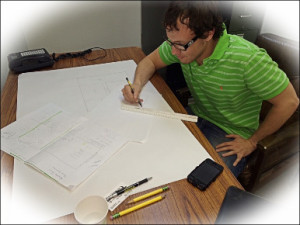Summary
Rescheck, Manual J, Manual S, Manual D DIY FAQ Question and Answer
Written by Jobe Leonard of the Reschexpert blog. Jobe enjoys helping others with easy to use Rescheck, Manual J, Manual S, and Manual D tutorials and written reports.

Jobe Leonard Rescheck.info
Rescheck, Manual J, Manual S, Manual D DIY FAQ Question and Answer
What does a Rescheck, Manual J, Manual S, Manual D cost?
Rescheck.info charges $269 for a prepaid Rescheck, Manual J, Manual S, Manual D package from their online energy reporting store.
We wanted to share a conversation with a Reschexpert blog reader about their custom Rescheck, Manual J, Manual S, and Manual D for their project and the typical questions that a client might ask while having a Rescheck, manual J, Manual S, and Manual d created for their project.
Ductwork for 1st floor should be located off on exterior walls when possible correct?
Yes, correct. Ok, so why show duct lines diagrams, for most part, in center of rooms? Is this standard drawing methodology?
Yes, your HVAC contractor will need some flexibility to install ductwork and registers in each room because of things like floor joists and unforeseen areas that limit where the ducts can travel. The cfm are present that need to be delivered to the room. Final location can be determined with your HVAC installed during a walkthrough on site to make sure placement of thing like furniture and appliances work for you and your needs.
_______________________________________________________________________________________________________________
Ductwork for 2nd and 3rd floor: S/B located close to floor, not ceiling
Yes. This is correct. 2nd and 3rd floor supply registers should be near ceiling, not floor, correct?
They should be on the floor, but it would also be possible to have use a ceiling if it was an absolute necessity. The CFM delivered to the room is paramount to whether you have a ceiling or floor mount. For example the areas with an insulated attic above could be serviced by duct work from above, but if an area on the second floor lacking an attic above needed service from below then it would be possible to deliver the CFM to that area from below.
______________________________________________________________________________________________________________
On Schedule S, how does the program arrive at optimal Furnace (given a range of values )and AC (Condenser) sizes, for each system: Example (System #1):
System 1: Furnace = 40,000 BTUH = range is: 37,293 -52,210
Furnace is actually sized on the Heat Loss which is how much heat your structure loses. The furnace needs to be able to replace this value. Response: I understand the process of using Heat Loss as a determinant in equipment capacity sizing. But, how do you arrive at 40,000 BTUH? Why not for example 38,000 or 45,000 BTUH, both of which are in range of 37,293 – 52, 210?
The 52,210 is irrelevant for the furnace. Furnace sizing only looks at the Heat Loss, which is what the furnace needs to replace. This adds the Heat Loss and Gain together which is not the correct formula. It is the Heat Loss only.
The Manual S software sizes at roughly 10% above. It is possible you could use a larger furnace typically up to 35% larger and still pass in the Manual S software. 40k would be your optimum performance. If you want to have extra capacity for piece of mind you could go up to 50k and still show that the system is not oversized. You could choose any furnace in this range.
___________________________________________________________________________________________________
System 1: AC = 36,000 BTUH = range is: 32,653 -37,551
AC system is sized on Heat Gain. This is how much heat your structure will gain from the outside climate. The AC needs to be able to replace this value. A 1 ton unit replaces 12000 btu, 2 ton 24000 btu, 3 ton 36000 btu etc. Response: Same as above, why pick 36K BTU? Range is btw 32.65K – 37.55K and could be any value in between, including 36,000BTUH.
37,551 is irrelevant for the AC unit. The AC unit only takes into account your heat gain. This is how much structure your heat will gain from your outdoor climate and what your AC unit needs to replace.
Your AC unit is sized based on the range that the Heat loss falls in by the software. Since it falls into the 30k – 36k range of heat gain at 32653 the unit is sized up to 36000k in the Manual S software which is equivalent of a 3 ton AC unit. If a 2.5 ton unit was chosen it would deliver 30k which would show on readout as undersized because it cannot deliver the peak 32653. If a 3.5 ton unit was chosen in the software it would read 42k and the readout would display oversized.
_________________________________________________________________________________________________________________
Questions:
Ductwork for 1st floor should be located off on exterior walls when possible correct?
Yes, correct.
Ok, so why show duct lines diagrams, for most part, in center of rooms? Is this standard drawing methodology?
Ductwork for 1st floor: S/B located close to floor, not ceiling, correct?
Yes.
Ductwork for 2nd and 3rd floor should be located off on exterior walls when possible correct?
Yes.
Ductwork for 2nd and 3rd floor: S/B located close to floor, not ceiling
Yes. This is correct. 2nd and 3rd floor supply registers should be near ceiling, not floor, correct?
Insulation –
REScheck: Are the correct R-values used to calculate Wall, Ceiling, Floor load calculations?
Yes, we used the U and R values directly from your final Rescheck we completed earlier this year. ok
Was Rescheck values or revised plan insulation values used to calculate?
Yes.
2 System and 2 zones per System
2 separate system reports for Manual J, S, D were run
How does have 2 zones per system impact load calculation, capacity, equipment size, and duct sizing?
Instead of needing to heat and cool the entire home you can choose individual zones. Each zone will use a thermostat to control the heating, cooling, and fan operation for its individual zone. The zone thermostats are wired to a central control panel. The panel connects the thermostats to the HVAC unit. Instead of using a single thermostat the control panel allows the unit to be controlled by multiple thermostats. Basically it is the difference having one light switch control the lights in your home in a basic system, and on a zone system you have a light switch in each room (zone) to control specific areas. Ok
For sizing, it has no impact on load, capacity, size, and duct sizing. Each room has a heat loss in gain that is totally independent of how a client chooses to heat and cool them. Once the load is determined the equipment size in rendered. Once the size is rendered the duct work is sized. Once the duct work is sized you can then determine how you would like deliver the required CFMS and BTUS to each room. Ok
On Schedule S, how does the program arrive at optimal Furnace (given a range of values )and AC (Condenser) sizes, for each system: Example (System #1):
System 1: Furnace = 40,000 BTUH = range is: 37,293 -52,210
Furnace is actually sized on the Heat Loss which is how much heat your structure loses. The furnace needs to be able to replace this value. Response: I understand the process of using Heat Loss as a determinant in equipment capacity sizing. But, how do you arrive at 40,000 BTUH? Why not for example 38,000 or 45,000 BTUH, both of which are in range of 37,293 – 52, 210?
System 1: AC = 36,000 BTUH = range is: 32,653 -37,551
AC system is sized on Heat Gain. This is how much heat your structure will gain from the outside climate. The AC needs to be able to replace this value. A 1 ton unit replaces 12000 btu, 2 ton 24000 btu, 3 ton 36000 btu etc. Response: Same as above, why pick 36K BTU? Range is btw 32.65K – 37.55K and could be any value in between, including 36,000BTUH.
Design Change:
Crawl space is to be removed.
Does this effect load calculations, and thus equipment and duct size?
We did not have crawl conditioned so this will not affect it. Ok
Cooling and Heating Loads (Manual J):
System 2: No Skylights noted on heating or cooling loads.
1 skylight in hall of 3rd floor. Load calculation adjustment needed?
Added Ok
4 – skylights on 3rd floor. Load calculation adjustment needed?
Added Ok
Return Duct (Manual D):
ACCA recommends a ducted return for each bedroom, den, library (See “Verifying ACCA Manual D Procedures”)
Your systems needs a certain amount of CFM to operate. We give the flexibility of multiple returns on our D worksheet and many times the customer and onsite contractor will place additional or fewer returns based on customer needs. Ok
Basement – 1 return in bedroom appears ok
Ok
1St floor – 1 return appears ok, but would Great Room be considered a den, thus need a return here?
I added a return here. Ok
2nd Floor – 1 return for 4 bedrooms and 1 library seems incorrect. Please advise
I added one for each of the bedrooms Ok
3rd Floor – 1 return between 2 bedrooms seems incorrect. Please advise
I added one for each of the bedrooms. Ok
Thanks for reading the Reschexpert blog and a detailed customer interation with our Rescheck chatbot. Thanks again for reading and if you are ready to order a Rescheck, Manual JSD simply email plans to service@rescheck.info and we will get you taken care of.



